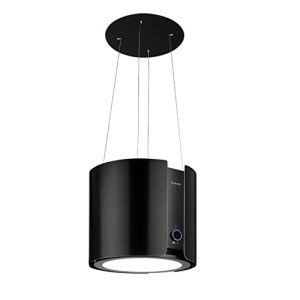Island Vent Hood Tools To Simplify Your Daily Life

How to Aerate an Island Vent Hood
Suspended from the ceiling, an island vent hood assists distribute air and keeps your kitchen without smoke and smells. It's also an elegant feature that boosts your cooking space.

Ventilation types include external venting, which pushes air through ductwork to the outside of your home, and recirculating designs that filter and recycle cooking fumes. Some hoods can even be converted between one and the other.
Ventilation
Unlike wall-mounted range hoods that vent air vertically through the wall to the outdoors, island vent hoods use ductwork that goes through the ceiling to tire the cooking location to the outdoors. The difference is that they can also be used to recirculate air.
Discover our choice of commercial and designer customized hoods with powerful ventilation systems. With adjustable specifications, find the best hood for your kitchen space.
Dacor's ConnectOn auto-responsive innovation switches on the hood and increases the fan speed in action to the cooktop, offering effective performance while utilizing very little noise. It's just another manner in which you can cook with confidence. Include a touch of modern with this stainless steel pyramid-style wall-mount canopy hood. This hood with dignity accentuates sophisticated cooking areas that follow a more traditional design style and clears the air of smoke, steam and cooking odors.
Design
Unlike wall-mounted range hoods that are mounted against the wall, island vent hoods are suspended from the ceiling over an island or peninsula cooktop or range. They also utilize ductwork to exhaust air out of the home. This design is best for kitchen areas that have a great deal of open area, and it helps to add visual interest to your room. This brand-new home features Blackberry stained cherry cabinetry on the parameter, and a natural stacked stone on the island and vent hood to complement the Gunstock stain on the cabinets. 10ft ceilings and a skylight assistance to keep the kitchen brilliant and roomy.
Sound
While an island vent hood does a wonderful task of filtering smoke, grease and smells out of your kitchen, it can also develop some sound that interrupts the tranquility of your cooking area. Thankfully, there are some strategies you can utilize to reduce this noise and permit you to prepare in peace.
One of the primary causes of excess range hood sound is triggered by fan motor issues such as stiff bearings or inadequately lubricated fans that produce a loud humming noise. Ductwork can likewise add to this problem particularly if the ducts are too little or if they are blocked with dust.
The very best way to minimize noise is to guarantee that your vent hood has the greatest air flow score that you can pay for. The Home Ventilating Institute (HVI) suggests an airflow rate of 100 to 250 cfm for wall-mounted hoods over 30-inch broad stoves. This hood should also have a multispeed fan to enable lower fan speeds during light cooking. Among the easiest methods to lower the sound is to make certain that the ducting is smooth-walled, as corrugated duct limits airflow. You ought to likewise keep the duct runs as short and straight as possible to prevent any kinking.
Installation
Ventilation of island range hoods is a different procedure than wall-mounted units, since they are suspended from the ceiling over an island or peninsula cooktop or stove. They generally need a duct that goes through the ceiling and out through the roofing system, which can be a complex job for an unexperienced homeowner.
In addition, they must be installed at least 24-inches to 36-inches above the cooking surface area. The height might differ, depending upon the size of the hood and the ceiling. If you have existing ducting and electrical circuitry in the kitchen ceiling, this kind of vent hood is reasonably easy to install. If not, it's advised that you speak with a professional.
To start island cooker hoods , make certain the hood can fit through the opening you have chosen for the vent which it's the best width to accommodate the ductwork and exhaust. If the hood is too large, it can lessen the effectiveness of the vent and will increase noise levels. Next, cut a little hole in the ceiling and use a wire cutter to check that there's no plumbing or electrical wiring near the hole. If there is, think about hiring island cooker hoods for the job or changing to a recirculating system.
If there isn't, you can begin the larger vent hole by drilling locator holes with a drill and a 1/2-inch masonry bit in each corner of the place. Then utilize a jigsaw to cut the larger vent hole. Finally, include a drywall spot and paint to finish the task. When the hood remains in place, you can run the electrical circuitry and connect it to your breaker box. Follow your manufacturer's directions for total setup information.
